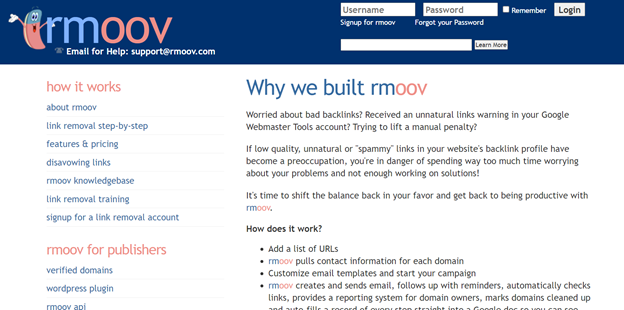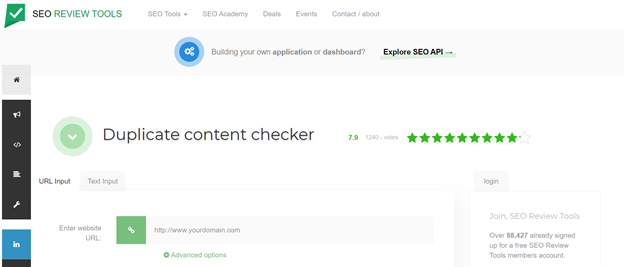What is Negative SEO and How to Detect It

A lot of bloggers don’t know it but there is such a thing as negative SEO. What is negative SEO, anyway? The basic concept of Negative SEO is to use unethical practices that would sabotage a website’s competitor rankings. The goal is to take your website out of the rankings, or better, get your website de-indexed. With all the hard work you do to get your website put together, getting harmful and negative SEO is just not worth it.
A lot of times, bloggers can use tools and techniques to safeguard their websites against negative SEO. In fact, Google already has ways to catch and penalize behavior that seems like negative SEO. Regardless, it is good to educate yourself about what it is, how you can detect it, and what ways you could do to protect it.
What are the types of negative SEO?
Bad backlink blasts
Link building is an important SEO practice that every blogger must know to maximize the performance of their website. Now, some webmasters actually pay for backlinks that will point back to their websites (link farms). This act, known by many SEO experts, is an ill-advised SEO practice. There is no problem if a lot of websites organically link back to you. Websites can have hundreds of backlinks, for which not all of them are expected to be organic. A good source indicates that 40 to 50 good, organic links to a website are what is considered as ‘normal.
One important thing to do about this is to know what makes a backlink ‘toxic’. Normally, these are the links that violate Google’s guidelines. If your blog has more toxic or spammy backlinks than good ones, it is sure to be a problem. Or, if you have suddenly had a thousand backlinks and hundreds of these are spammy, then that may surely be an attack.
Spammy Anchor Texts
Spammy anchor texts are a negative SEO practice that is directly related to bad backlink blasts. Usually, these are spammy backlinks that use the same keywords. It is normal to have a couple of anchor links that are the same. However, if you have a thousand backlinks and hundreds of these have a noticeable pattern, then it is anchor text spamming. It could be considered as an attack.
Hacking
It is pretty difficult to regain trust and loyalty from users once a website has been hacked. Imagine trusting a website that could not trust your personal data and information? No matter how loyal a user is, it will be difficult to entice them to continue using your website. Attackers may get your users’ information to their advantage – subscription lists, emailing lists, and more. Hackers may also have the option to sell their users’ personal information to groups and companies that need them. Or worse, hackers can encrypt and move your database and ask you for ransom to restore your access to it.
This is why hacking is the most common negative SEO type. To combat this, it is best to know the different signs to know your website is being or has been attacked.
Duplicated content
When there are multiple duplicates of your posts on other websites, not only can it affect your search engine ranking but it could get your website de-indexed by Google.
This is also a pretty common trick. Unlike hacking which could get attackers heavy sentences, there is no heavy criminal liability with duplicating content on the internet. Why? Because it is hard to prove that only a single group or person is responsible for all the duplicated content. You could report each duplicated content but these reports would give individual penalties for individual reports. But a full-on investigation on whether or not it comes from one source is difficult to pull through.
Fake Negative Reviews
Ruining a brand’s reputation could lead to significant traffic drops. It is already hard to control bad reviews posted on the comments section of your own website. But, it is harder to ask other webmasters and bloggers to take down negative reviews on their own websites. Even though they are obviously fake, it is hard to take them down.
How can we fix it?
The first thing you must always do once you detect that your website is being attacked with negative SEO is to report it. Although there are no specific penalties that cover websites that use negative SEO. However, it could be considered under webspam and there are penalties under that category intended for negative SEO activities.
Being proactive is also one of the best ways to ‘fix’ negative SEO attacks. Install software and plugins that could detect attacks for you. Perform regular audits for your website to ensure that your content and data are safe against attacks like this. For duplicated content, you could download and install software or plugins that could find your stolen content on the internet and report it to search engines.
Tools to protect your blog against Negative SEO
Backlink Tracker
There are free tools on the internet that you don’t need to download that could help you track and check all backlinks to a particular domain. An example would be Small Seo Tool’s free backlink checker:

If you want full protection for a small fee, an example would be the Backlink Audit Tool by SEM Rush:

Spammy Link Remover
Once you have detected that your website does have numerous bad backlinks, you could install spammy link remover tools. An example would be this rmoov tool:

Duplicate content finder
There are tools available on the internet that could find and check duplicate content for you. Once you find duplicated content, you can then report it to search engines. Here is a sample checker from SEO review tools you could use:

Also read: How to Cope With the Changes in SEO
Civil Engineer by profession, Writer by passion. Serving readers since 2014 on different niches like Science, Current Events, Tech, and Travel.

